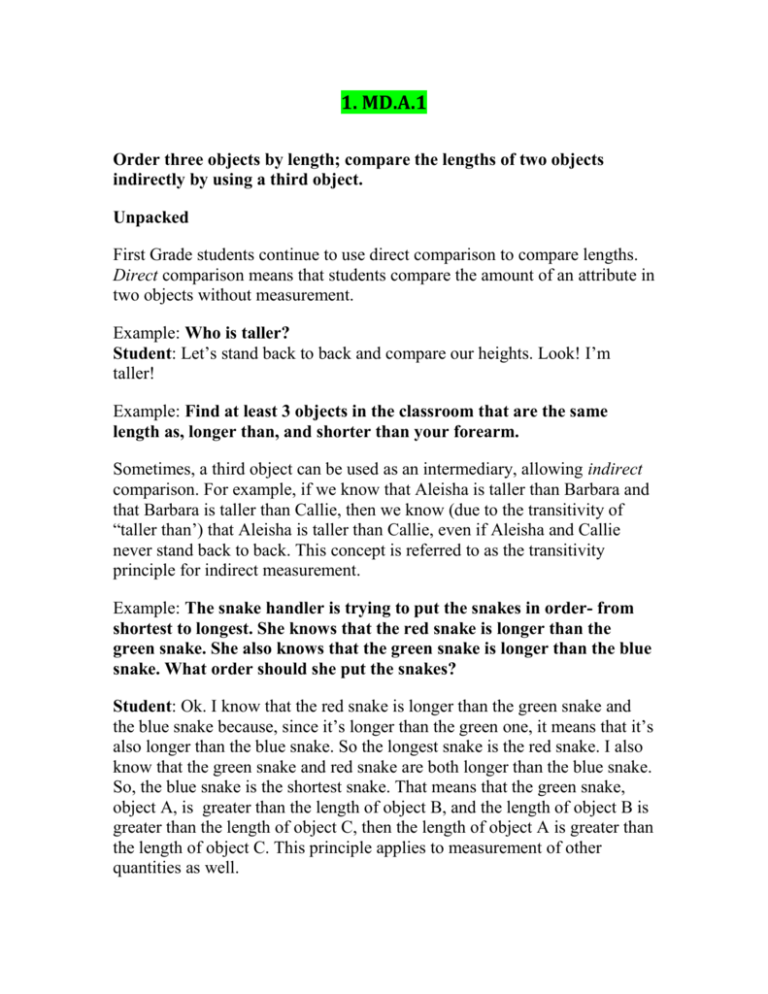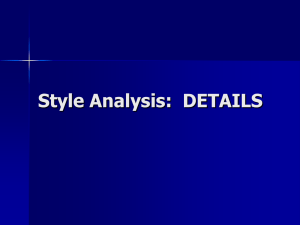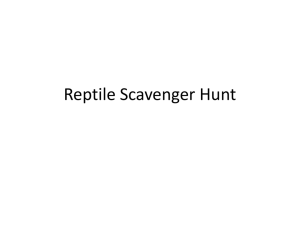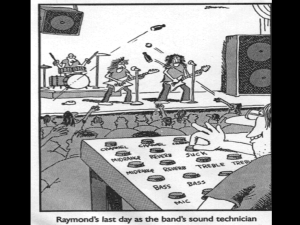1.MD_.A.1-unpacked
advertisement

1. MD.A.1 Order three objects by length; compare the lengths of two objects indirectly by using a third object. Unpacked First Grade students continue to use direct comparison to compare lengths. Direct comparison means that students compare the amount of an attribute in two objects without measurement. Example: Who is taller? Student: Let’s stand back to back and compare our heights. Look! I’m taller! Example: Find at least 3 objects in the classroom that are the same length as, longer than, and shorter than your forearm. Sometimes, a third object can be used as an intermediary, allowing indirect comparison. For example, if we know that Aleisha is taller than Barbara and that Barbara is taller than Callie, then we know (due to the transitivity of “taller than’) that Aleisha is taller than Callie, even if Aleisha and Callie never stand back to back. This concept is referred to as the transitivity principle for indirect measurement. Example: The snake handler is trying to put the snakes in order- from shortest to longest. She knows that the red snake is longer than the green snake. She also knows that the green snake is longer than the blue snake. What order should she put the snakes? Student: Ok. I know that the red snake is longer than the green snake and the blue snake because, since it’s longer than the green one, it means that it’s also longer than the blue snake. So the longest snake is the red snake. I also know that the green snake and red snake are both longer than the blue snake. So, the blue snake is the shortest snake. That means that the green snake, object A, is greater than the length of object B, and the length of object B is greater than the length of object C, then the length of object A is greater than the length of object C. This principle applies to measurement of other quantities as well. Example: Which is longer: the height of the bookshelf or the height of a desk? Student A: I used a pencil to measure the height of the bookshelf and it was 6 pencils long. I used the same pencil to measure the height of the desk and the desk was 4 pencils long. Therefore, the bookshelf is taller than the desk. Student B: I used a book to measure the bookshelf and it was 3 books long. I used the same book to measure the height of the desk and it was a little less than 2 books long. Therefore, the bookshelf is taller than the desk. An important set of skills and understandings is the ordering of a set of objects by length. Such sequencing requires multiple comparisons (no more than 6 objects). Students need to understand that each object in a seriation is larger than those that come before it, and shorter than those that come after. Example: The snake handler is trying to put the snakes in order- from shortest to longest. Here are the three snakes (3 strings of different length and color). What order should she put the snakes? Student: Ok. I will lay the snakes next to each other. I need to make sure to be careful and line them up so they all start at the same place. So, the green snake is the shortest. The red snake is the longest. And the blue snake is medium-sized. So, I’ll put them in order from shortest to longest: green, blue, red. (Progressions for CCSSM: Geometric Measurement, The CCSS Writing Team, June 2012.)









